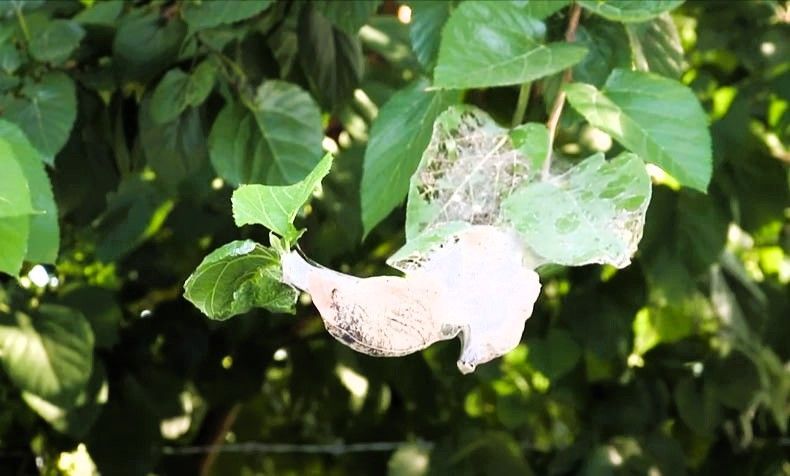How to Get Rid of Webworms in Trees Without Damaging Your Yard
Simple and effective ways to get rid of webworms naturally

Spotting big, silky webs draped over your tree branches? Looks like webworms have moved in. These little caterpillars won’t kill your trees, but they sure know how to make them look sad and stressed. Leave them unchecked, and they’ll spread fast, turning your once-beautiful trees into a webby eyesore. Not exactly what you want in your yard, right?
Good news—webworms don’t have to ruin your trees or your day! Whether you’re a homeowner trying to keep your yard looking great, a tree lover nurturing healthy growth, or a gardener protecting your fruit trees, this guide has you covered with simple, effective ways to tackle those pesky webworms.
What Are Webworms and What Trees Do They Affect?
What Are Webworms?
Fall webworms are tiny, fuzzy caterpillars known for wrapping tree branches in thick, silken webs. Hatching in late spring, these little guys stick around through the fall, munching on leaves and turning their nests into sprawling, webby hangouts as they grow.
Commonly Affected Trees
Webworms aren’t too picky, but they definitely have their favorite trees to snack on, like:
- Walnut
- Apple
- Pear
- Willow
- Pecan
Spotting those big, messy webs in your trees? Don’t wait—take action now before these little pests take over!
Best Ways to Get Rid of Webworms Naturally
You don’t always need chemicals to deal with webworms. Try these three eco-friendly tricks to keep them under control while being kind to the planet!
1. Manual Removal: Simple but Effective
If the infestation is small, physically removing webworms is one of the best ways to prevent damage.
- Break Up Webs – Use a broom, rake, or garden hose to tear apart the webs.
- Prune Affected Branches – Cut off heavily infested branches and dispose of them away from your yard.
- Destroy Webs on the Ground – If webs fall to the ground, remove and discard them to prevent caterpillars from spreading.
This approach is most effective when done early in the infestation, before webworms have time to multiply.
2. Encourage Natural Predators
Nature provides a built-in solution to webworms if you know how to attract the right helpers.
- Birds – Many species, including chickadees and warblers, feed on webworms. Installing bird feeders or nesting boxes can encourage them to stick around.
- Beneficial Insects – Ladybugs and lacewings naturally reduce webworm populations. Planting flowers like marigolds and daisies can attract these helpful insects.
- Parasitic Wasps – Though they might sound intimidating, these tiny wasps help control webworms by targeting their eggs and larvae.
Encouraging biodiversity in your yard is one of the best long-term strategies for pest control.
3. Use Organic Sprays for Extra Protection
If webworms are widespread, natural sprays can provide additional control.
- Bacillus thuringiensis (Bt) – A naturally occurring bacteria that targets webworms without harming birds, bees, or other beneficial insects.
- Neem Oil – Disrupts the webworm life cycle and prevents them from feeding. Apply in the early morning or late evening to avoid harming pollinators.
Always follow application instructions and reapply as needed for the best results.
How to Prevent Webworms from Coming Back
Once webworms are gone, taking preventative steps can stop them from returning next season.
1. Regular Tree Maintenance
Pruning trees in late fall or winter can remove webworm eggs before they hatch. Keeping trees trimmed also makes it harder for webworms to establish large nests.
2. Keep Trees Healthy
Strong, well-maintained trees recover from pest damage faster. Providing adequate water, fertilizer, and mulch can help trees withstand infestations.
3. Maintain a Balanced Ecosystem
A diverse landscape with a mix of plants, trees, and flowers encourages natural predators that keep webworm populations under control.
When to Leave Webworms Alone
Not every webworm infestation requires intervention. In some cases, it's best to let nature take its course.
- Minimal Damage – If only a few webs are present and the tree is otherwise healthy, no action may be needed.
- Seasonal Changes Will Clear Them Out – Rain, wind, and cold weather will naturally break down webworm nests.
- Natural Predators Are Active – If you have a good population of birds and beneficial insects in your yard, they may handle the problem for you.
Monitoring your trees and assessing the level of infestation will help you decide the best course of action.
Final Thoughts: Take Back Control of Your Trees
Webworms can be a hassle, but they don’t have to take over your trees. With a little effort, whether it’s removing them by hand, encouraging natural predators, or using eco-friendly sprays, you can keep them in check while keeping your yard safe for the environment.
Dealing with pesky webworms or unsure how to care for your trees? Kanata Tree Service Masters has you covered! From
tree health and pest control to keeping your landscape looking its best, we’re here to help your trees thrive.
Reach out today and let’s make sure your trees stay strong and beautiful all year long!


